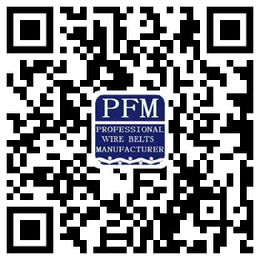Balanced Spiral Woven Conveyor Belts: A Comprehensive Guide to Drive Mechanisms and Applications
Balanced Spiral Woven Conveyor Belts are integral components in many industries, offering diverse solutions based on their driving mechanisms. These belts are available in three primary driven versions—friction drive, positive drive, and chain drive—each offering distinct advantages tailored to specific operational needs. Below is an expanded view of each type, with an emphasis on their practical applications and performance characteristics.
1. Friction Drive Conveyor Belts
Friction drive systems represent the most widely used method for powering Balanced Spiral Woven Conveyor Belts. This system relies on the frictional contact between the belt and a drive roller to impart motion to the belt. The key aspects of this method are outlined below:
• Mechanism: The drive roller, typically constructed from steel or other durable materials, is positioned in contact with the underside of the conveyor belt. To enhance the friction and minimize belt slippage, the roller may be lagged with materials like rubber or friction brake linings. This helps to create the necessary traction without overloading the belt.
• Applications: Friction-driven belts are commonly found in applications where lighter loads are conveyed, including industries like food processing, packaging, and pharmaceuticals. The friction mechanism provides a cost-effective and efficient solution for low to medium-speed operations, making it ideal for small to lightweight products such as packaged goods, plastic parts, or bakery items.
• Advantages:
• Simple design and cost-effective
• Low maintenance requirements
• Can handle a wide range of small or lightweight products
• Adjustable speed control and simple tension management
• Limitations:
• Reduced efficiency with high load or speed requirements
• Limited in terms of handling heavy-duty or high-temperature applications


2. Positive Drive Conveyor Belts
The positive drive system provides a more advanced and precise method of controlling the movement of the conveyor belt. This method utilizes sprockets that engage with the mesh of the belt, ensuring positive engagement between the two components.
• Mechanism: In this system, sprockets are fixed at intervals along the length of the belt, with the teeth of the sprockets meshing with the belt's mesh structure. This engagement ensures a tight grip on the belt, preventing the belt from slipping or "tracking off" the conveyor path, even during high-speed operations or when conveying heavy loads. The sprockets transfer motion directly to the belt, allowing for greater control of the belt's movement.
• Applications: Positive drive belts are particularly well-suited for industries that require consistent, reliable movement of heavy or irregular loads. They are ideal for applications such as automotive assembly lines, metalworking, food processing (especially for hot or frozen products), and packaging of heavy goods. The method's precision also makes it suitable for systems with strict alignment requirements.
• Advantages:
• Prevents "track off" and reduces the risk of belt misalignment
• Suitable for high-load and high-speed applications
• Lower belt tension, which extends the life of both the belt and the drive system
• Handles challenging applications, such as conveying hot or frozen products
• Limitations:
• Higher initial cost compared to friction drive systems
• Requires more precise installation and maintenance
• May generate higher noise levels due to the engagement of sprockets


3. Chain Drive Conveyor Belts
The chain drive system is designed for high-torque, heavy-duty applications where efficiency and precision are crucial. In this system, chains are integrated at the edges of the belt and used to pull the belt mesh through the conveyor circuit.
• Mechanism: Chain drive systems utilize robust chains that are attached to the belt edges or undercarriage. These chains mesh with sprockets, which are driven by motors or other mechanical systems. The chain pulls the conveyor belt through the system with high efficiency, ensuring minimal slack and providing precise tracking control.
• Applications: This type of drive is used in industries that demand heavy-duty, reliable performance under extreme conditions. Typical applications include bulk material handling, heavy metal processing, automotive production lines, and high-temperature environments. Chain drive systems are also effective in handling large, irregularly shaped loads, such as raw materials in mining, steel production, and foundries.
• Advantages:
• High efficiency and power transmission, ideal for heavy-duty applications
• Simplified conveyor belt alignment and tracking
• Can operate effectively at high speeds or in high-temperature environments
• Suitable for transporting large or irregularly shaped products
• Limitations:
• More complex and costly than friction drive or positive drive systems
• Requires more maintenance, particularly in terms of chain lubrication and wear
• Noise levels can be higher, especially at high speeds


Choosing the right drive mechanism is crucial based on the operational needs, load requirements, speed, and environmental conditions of the application. Whether for light product handling, high-speed operations, or heavy-duty processing, each drive type brings its unique set of advantages tailored to meet specific production and logistical challenges.
 +86-15369679157
+86-15369679157











